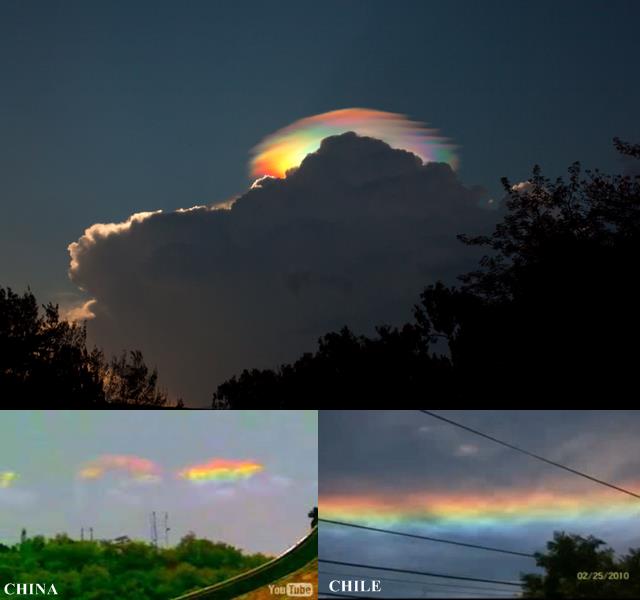Mainstream ufology needs to re-invent itself. The concepts, beliefs and fundamental assumptions that have driven it over its first half-century of existence are due for a major overhaul. Mainstream ufology espousing one or another form of the Extra-Terrestrial Hypothesis or ETH would be wise to acknowledge its cultural and historical roots as a bit of Forties and Fifties Americana. This is currently being extended beyond its shelf-life.
One potential re-invention is “earth lights” research: the study of glowing, polymorphous forms by night either stationary or aerobatic, ranging from inches to several yards across – and shiny metallic or pitch-black forms by day. (The term “earth lights” is simply a nickname to distinguish the phenomena from ideas of ET craft.) To the earth lights researcher, most UFO reports are just that reports. Only a very small percentage relate to anomalous phenomena, and of that small percentage, it is likely that most will be earth lights. It is possible, if unlikely, that a small portion relates to ET.
Like Aesop’s tortoise, earth lights research has passed other ufological hares, now attracting significant funding and the interest of mainstream The informed, cutting-edge scientific hypotheses it provokes show up the ETH for the intellectual dinosaur it is. Moreover, it can offer more than just anecdotal evidence a trend that looks set to outstrip any other ufological approach.
Charles Fort was among the first to note that strange “meteors” appeared coincidentally with earthquakes. It was not until the 1960s, however, that ufologist John Keel and French researcher Ferdinand Lagarde linked the appearance of unusual lights with areas of geological faulting and magnetic anomaly. In 1975, Andrew York and I mapped occurrences of recorded strange phenomena over a number of centuries in the Fortean Times.
Meteorological anomalies such as “strange lightning” and reported UFOs had their greatest incidence over the faulted regions of the county. Two years later, Michael Persinger, a neuroscientist, and geologist at Laurentian University in Canada, together with Gyslaine Lafrenière, published a study of the United States which similarly indicated a correlation between higher levels of reported UFO activity and the locations of earthquake epicenters.
Persinger and Lafrenière saw UFOs as electromagnetic phenomena arising from the tremendous energy associated with the constantly rising and falling tectonic stress in the Earth’s crust, whether or not full-blown earthquakes occurred. They visualised fields of forces operating evenly and quietly over large regions which could become focused at any given time in a few small areas of particular geological resistance or instability such as fault lines, mineral deposits, unyielding rock outcrops, hills, mountains and so on. They likened this to the energies in the atmosphere being equally capable of producing a gentle breeze over a wide area or a localised ferocity like a tornado. “The existence of man upon a thin shell beneath which mammoth forces constantly operate, cannot be overemphasized,” they argued. This was the first outing of what has come to be known as the Tectonic Strain Theory, or TST.
Harley Rutledge, a physics professor at Southeast Missouri State University, conducted field investigation of an outbreak of lights that began in 1973 around Piedmont. The results of this were published in Project Identification in 1981.
In 1986, Persinger with John Derr, a leading US geologist, studied an earlier outbreak of lights in the Yakima Indian Reservation, Washington State. Fire Wardens on the reservation saw huge orange light balls floating above rocks, as well as smaller “ping-pong balls” of light bounding along ridges. Glowing clouds and subterranean rumblings were also noted during this period. The fire wardens took photographs of the lights and triangulated the positions using radios. Scientific observations followed: Derr and Persinger showed that the Yakima lights were seen most often in the vicinity of the fault-riddled ridges that cut across the reservation and with Satus Peak, the general area of a surface rupture and one of the stronger earthquakes in the region during the 13 years covered by the study.
Successive reporting of lights occurred in the seven months preceding the biggest earthquake of the studied period. Regional seismic activity also increased during the times in 1972 and 1976 when most sightings were reported. (The irony of the Yakima case is that the reservation is adjacent to the part of the Cascades Mountains where pilot Kenneth Arnold saw the flight of nine glittering objects in 1947 that initiated the flying saucer era. In fact, Arnold landed his plane at Yakima airfield shortly after his encounter.)
But it was the outbreak of lights at Hessdalen, a valley 70 miles (112 km) south-east of Trondheim in Norway, that really switched on the earth lights.
From about November 1981, people living in the mineral-rich area began seeing unexplained lights. These appeared as white and yellow-white spheres, ‘bullets’ with pointed end downwards and inverted “Christmas tree” shapes.
Strong, localised flashes in the sky were also observed and there were reports of underground rumbling. By the summer of 1983, hundreds of reports of strange lights had been made by the inhabitants of Hessdalen, so Norwegian and Swedish UFO groups formed Project Hessdalen. From 21 January to 26 February 1984, the project continuously monitored the valley using a range of instrumentation, including radar, and succeeded in obtaining photographs of strange lights plus a number of instrumental readings. Such work then continued sporadically over a few years.
Jeroen Kumeling
